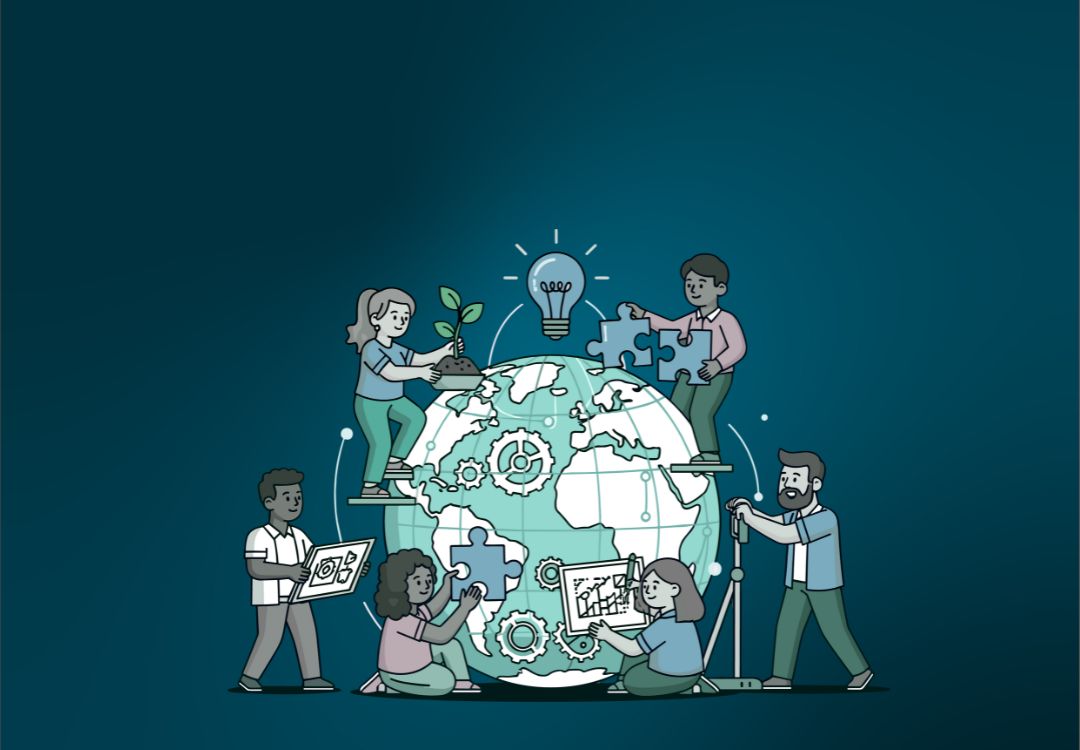A sustainable future: AI-driven innovations for a greener world

A sustainable future: AI-driven innovations for a greener world
Welcome to the era of AI-driven innovations, where cutting-edge technology meets our pressing need for a greener world. As we stand at a critical juncture in history, with climate change accelerating and environmental degradation reaching alarming levels, it is imperative that we harness the power of artificial intelligence to pave the way towards a sustainable future. In this blog post, we will explore how AI-powered solutions are revolutionizing various sectors and driving us towards achieving a harmonious coexistence with nature.
Challenges to sustainable future like air pollution are a global crisis that poses significant threats to public health and the environment. According to the World Health Organization (WHO), indoor air pollution from cooking with solid fuels causes an estimated 4.3 million premature deaths annually, an AQI value of 100 or above is often considered "unhealthy for sensitive groups" but now a days, it's common in most of the cities, for example, parts of London have recorded NO2 concentrations above 40 µg/m³, while the WHO guideline is 40 µg/m³ as an annual mean, making it one of the most pressing challenges of our time.
Fortunately, AI-Driven technologies for monitoring, prediction and reducing emissions are playing a pivotal role in addressing this crisis. This article explores how AI is helping in Sustainable development towards a greener world and highlights existing innovative patents that are making a difference.
Here are some examples of innovative patents that are contributing towards sustainability:
Smog-Eating Concrete: In 2007, a patented innovation known as "smog-eating concrete" was introduced by the Italian cement company Italcementi. This concrete contains titanium dioxide, which reacts with sunlight to break down airborne pollutants, such as nitrogen oxides (NOx), into less harmful substances. It is used in construction to help mitigate urban air pollution.
Air Purifying Bicycles: A Chinese designer named Daan Roosegaarde patented an air-purifying bicycle concept. These bicycles are equipped with a device that sucks in polluted air, filters out particulate matter, and releases clean air for the rider to breathe. It's an innovative approach to promote cleaner air in congested urban areas.
Plastic-Eating Enzymes: Researchers at the University of Portsmouth, UK, patented an enzyme that can break down plastics, including polyethylene terephthalate (PET), commonly used in bottles. This innovation has the potential to address plastic pollution by allowing for more efficient recycling and plastic waste reduction.
Water Pollution Remediation: Patented technologies like "SolarBee" use solar-powered water circulation devices to combat water pollution in lakes and reservoirs. These devices help distribute oxygen and prevent the buildup of harmful algal blooms, which can cause water quality issues.
Air Quality Sensors: Companies like Honeywell have patented advanced air quality sensors that can detect a wide range of pollutants, including volatile organic compounds (VOCs), carbon monoxide (CO), and particulate matter. These sensors enable real-time monitoring and data collection to address indoor and outdoor air quality issues.
Solar-Powered Pollution Control: Patented solar-powered air and water purification systems, such as those developed by companies like Graviky Labs, use solar energy to remove pollutants from the environment. For instance, Graviky Labs' "Kaalink" technology captures particulate matter from vehicle exhaust and turns it into ink for art.
Sustainable development based on AI innovation: How to patent it
Artificial Intelligence (AI) has seen significant growth in research, development, and patenting over the past few years. AI inventions can span a wide range of applications, including machine learning, natural language processing, computer vision, robotics, and more. Patent allow inventors and organizations to protect their intellectual property related to these AI innovations. Artificial intelligence (AI) has the potential to play a significant role in shaping a more sustainable and environmental friendly future. It is essential to approach its development and deployment with a critical eye toward potential unintended consequences.
The projection that the global AI software market will generate USD 126 billion (as per Statista) in revenue by 2025 showcases the substantial economic potential of AI-driven software solutions. This growth indicates the expanding adoption of AI technologies across industries. According to Statista, the anticipated increase in revenue from the global AI-driven hardware market, from USD 19.63 billion in 2018 to USD 234.6 billion by 2025, reflects the demand for specialized hardware optimized for AI computations. This hardware growth supports the advancement of AI capabilities.
Patenting AI-based sustainable development innovations involves a strategic and comprehensive approach to protecting your intellectual property. With Einfolge’s guide, you can navigate the patent process for your AI-based sustainable development invention.
Begin by conducting a thorough Patentability search to ensure that your AI-based sustainable development solution is novel, non-obvious, and usefulness. Depending on your invention, you might apply for utility patents, which cover new and useful processes, machines, or compositions of matter. Software and algorithms may also be eligible for patents in some jurisdictions. Einfolge’s drafting team has experts in both AI and sustainable development, to draft a detailed patent application. Once your patent is granted, you can enforce your rights by taking legal action against anyone infringing on your patented AI-based sustainable development innovation. For detailed patent filing information please visit Einfolge.